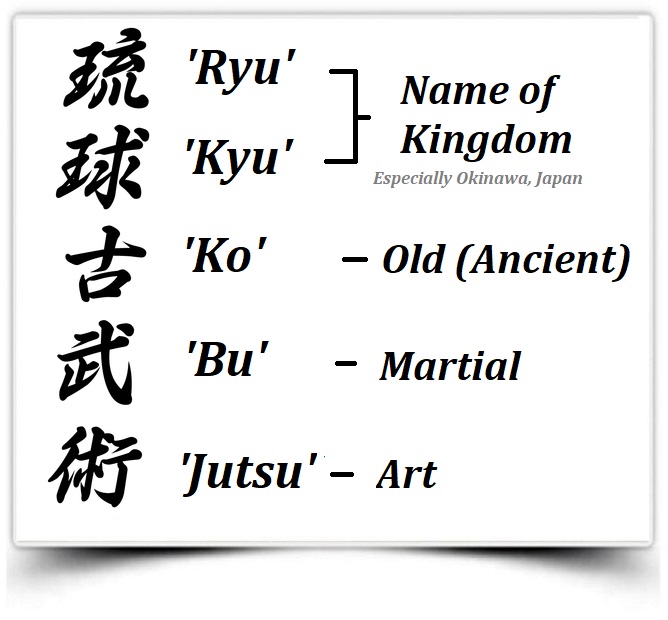KARATE-DO GENESIS (Introduction of Karate-Do)
Karate-Do is a martial art developed in Japan and one of the most well-known martial arts practiced worldwide for its numerous benefits. The word Karate-Do means the way of empty hand, in simple words fighting without weapons. It is an art of self-defense using your body as a weapon, without relying on man-made weapons. After a long, disciplined, and serious training, the body parts are used as attacking and defending tools in unarmed combat. The hand techniques are called “Te Waza” used in attack and defense, “Keri Waza” for Kicking techniques, and “Dachi Waza” for positioning you strongly and firmly on the ground.
I) KIHON 基本 (Basic / Fundamental training of techniques)
Tsuki – Waza, Uke Waza, Keri Waza, Tachi Kata, Gatame Waza, Nage Waza.
Ido-Kihon (Single Technique Moving Basics),
Ido Renzuko Kihon (Combination Moving Techniques).
II) KATA 型 ( Pattern of Karate techniques / Forms),
Kihon Kata, Intermediate / Advanced Kata
Omote, Ura & Honto Bunkai Kumite (techniques analysis/application of techniques)
III) KUMITE 組手 (Sparring).
Yakusoku Kumite (Pre-arranged sparring)
Tenshin / Happo (Eight Direction one step sparring)
Shia Kumite (Sports Sparring with rules)
Jiyu Kumite (Free sparring)
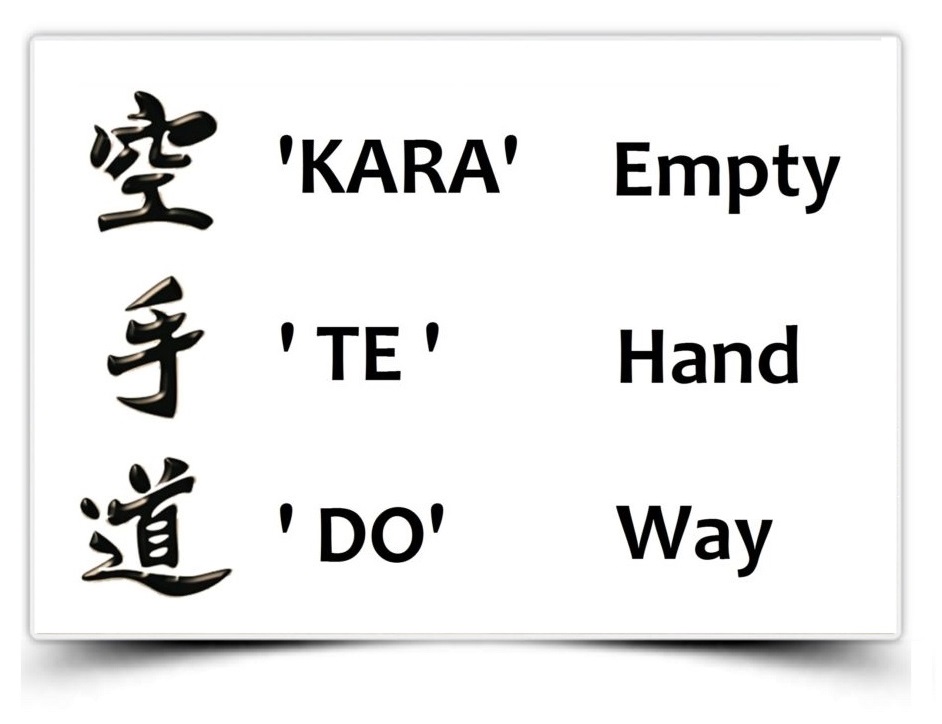
Besides being a fighting art Karate-Do also emphasizes the development of courtesy, morals, and physical level which fosters the vital growth of children and adults. Vigorous training makes appropriate use of the energy of the practitioner that enables him/her to control their anger, frustrations, stress, etc.
Karate students are taught to concentrate and fight against their weaknesses and overcome them which results in a strong and able person in life. If you make yourself strong, then it is easier to tackle your opponent and get the upper hand. Being strong and able also gives a sense of responsibility in being a good citizen of society and learning the importance of respecting one another and not hurting anyone. An example of this can be seen in the Karate Dojo, training seminars, and tournaments where it is taught to give respect to the opponent by doing a “BOW” (formal greeting) before and after fighting or training. These methods ideally change a practitioner’s nature turning him to be patient and respectful towards the opponent and everyone in general. This results in harmonizing the environment.
Besides martial arts, the teacher of Karate-Do (Sensei) also makes the student aware of his/her responsibility in society and the value of life itself. Hence the responsibility and role of a Karate teacher must be firm, exhibiting the positive qualities of being a role model for others. “Self-Perfection” is the ultimate goal of Karate-Do training and thus is the “Way of Karate-Do”.
IMPORTANCE OF KARATE-DO EDUCATION.
Through Karate-Do training one can discover and develop him/herself. Parents send their children to school to educate their minds so the child learns more about the world around him/her. Thus, education helps him/her grow in his life leading to a successful life. This often leads to an over-emphasis on the mental aspects of education but not sufficient emphasis on physical and emotional aspects. This can result in a lack of self-confidence, refusal to accept responsibility, and not being aware of one’s potential. Being too protective makes the child weak so teach them to run, fall, and get up and then run again better and faster.
Children in this modern era spend most of their time either intuition, studying or watching television, or playing on computers which affects and harms their physical growth. As a result of this the child when grows shall have the knowledge and potential to execute the task but due to lack of physical fitness and confidence may not be able to give their best.
Training in martial arts especially in “Karate-Do” the child learns to develop a good moral character as well as strengthen his body, to be able to cope up with all the challenges that life can throw at him/her. This can automatically lead to becoming aware of one’s potential.
Through daily Karate training, the student’s physical strength is developed. The student becomes agile, flexible, and strong, improves his balance, and reflexes, enhancing the functioning of kidneys, liver, heart, and other vital organs, the whole nervous system through daily practice of Karate-Do. Muscles and bones are trained and made healthy and strong so they can absorb the blows with less risk of injuries or fractures.
During training sessions, and tournaments the student learns to observe and study the skills of the opponents, and this develops his /her ability to analyze.
In today’s modern era, most youth and adults are engrossed and involved in a virtual world of games, television, the internet, etc. This involvement keeps them very far from reality and the difficulties of life. Thus, they do not learn how to deal with and react appropriately to the reality and difficulties of life when the need arises and this, in turn, makes them lose their confidence and faith in themselves. They cannot express and come out with their true abilities and spirit. Hence the difficulties and challenging tasks of Karate training, competitions, and seminars help them to socialize and meet different students from different backgrounds and learn to adjust, work, and progress in difficult situations. Through the medium of karate training, they can recognize their true potential and capabilities and try to develop in the best way possible. They later know their abilities and disabilities and learn to acquire their goals in life with self-confidence and understanding.
Through Karate-Do training one can discover and develop him/herself. Parents send their children to school to educate their minds so the child learns more about the world around him/her. Thus, education helps him/her grow in his life leading to a successful life. This often leads to an over-emphasis on the mental aspects of education but not sufficient emphasis on physical and emotional aspects. This can result in a lack of self-confidence, refusal to accept responsibility, and not being aware of one’s potential. Being too protective makes the child weak so teach them to run, fall, and get up and then run again better and faster.
Children in this modern era spend most of their time either intuition, studying or watching television, or playing on computers which affects and harms their physical growth. As a result of this the child when grows shall have the knowledge and potential to execute the task but due to lack of physical fitness and confidence may not be able to give their best.
Training in martial arts especially in “Karate-Do” the child learns to develop a good moral character as well as strengthen his body, to be able to cope up with all the challenges that life can throw at him/her. This can automatically lead to becoming aware of one’s potential.
Through daily Karate training, the student’s physical strength is developed. The student becomes agile, flexible, and strong, improves his balance, and reflexes, enhancing the functioning of kidneys, liver, heart, and other vital organs, the whole nervous system through daily practice of Karate-Do. Muscles and bones are trained and made healthy and strong so they can absorb the blows with less risk of injuries or fractures.
During training sessions, and tournaments the student learns to observe and study the skills of the opponents, and this develops his /her ability to analyze.
In today’s modern era, most youth and adults are engrossed and involved in a virtual world of games, television, the internet, etc. This involvement keeps them very far from reality and the difficulties of life. Thus, they do not learn how to deal with and react appropriately to the reality and difficulties of life when the need arises and this, in turn, makes them lose their confidence and faith in themselves. They cannot express and come out with their true abilities and spirit. Hence the difficulties and challenging tasks of Karate training, competitions, and seminars help them to socialize and meet different students from different backgrounds and learn to adjust, work, and progress in difficult situations. Through the medium of karate training, they can recognize their true potential and capabilities and try to develop in the best way possible. They later know their abilities and disabilities and learn to acquire their goals in life with self-confidence and understanding.
KNOWING ONE'S SELF KNOWS OTHER
In Karate-Do training, the students learn to interact with people of different backgrounds and types. Interacting with only family members, and friends, and with virtual images on computers and games does not give them the real image of society and its people. In group training, competitions, and camps the student learns to interact with people coming from diverse backgrounds. Hence, they learn how to deal with and use their senses judge the opponent’s strengths and weaknesses, and prepare accordingly. This is a major part of martial arts training which cultivates and develops skills for understanding others by observing and studying them. Through physical interaction in training, the students learn how to deal with opponents stronger and bigger than them. Becoming aware of one’s limitations very often leads to an understanding of your opponent’s limitations. Hence intensive training leads to the development of reflexes and an intuitive ability to gauge the opponent’s actions.
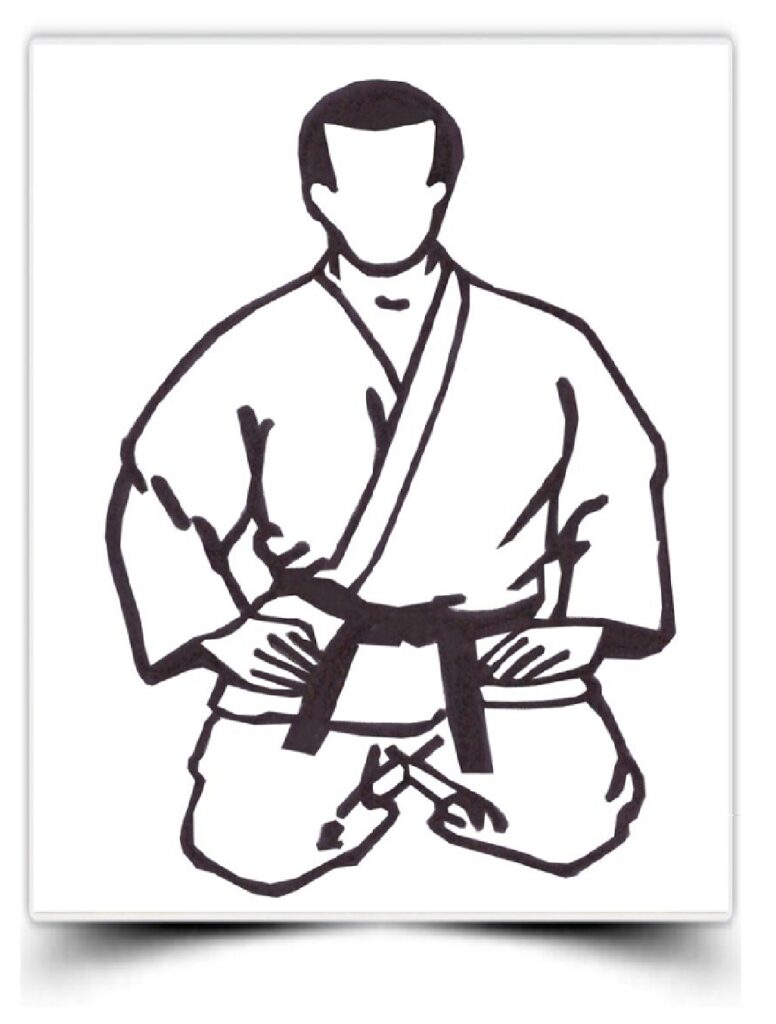
SENSEI 先生 (TEACHER )- A ROLE MODEL
Sensei The relationship between a teacher and a student in martial arts is very important. In today’s modern world, this bond is weakening due to the rising misunderstanding and unhealthiness of society. In schools, the teachers are not allowed to make any physical interaction with students as it was in the olden times, and the whole communication is verbal.
Karate-Do is a martial art and cannot be taught only by verbal communication and means. The Karate Teachers have to demonstrate the techniques themselves and the students must observe them. Then while performing the skills the teacher has to make physical contact with the students to correct their technique. To understand the technique better the Sensei (teacher) sometimes can also ask the student to be his partner to demonstrate the technique. The efforts and demonstration from the teacher develop respect and bond with the students.
Every Karate technique a child performs shows his/her mental and physical condition and a skilled sensei observes it and identifies and corrects the mistakes of the student. The students continuously observe Sensei and how his way, attitude, and even words affect them. The instructions and training they receive in the Dojo (training hall) help them to develop themselves physically and mentally for their self-cultivation.
RESPECT ONE ANOTHER AND CREATE HARMONY.
Karate-Do training even teaches one to respect one’s enemy. Every Karate training session, lesson, or demonstration of skills starts and ends with a BOW (Rei). The Bow (Rei in Japanese) indicates respect and courtesy towards your opponent. The etiquette and the Reishiki (opening ceremony) are the most important part of Karate-Do training which teaches the “way of respect”. The student has to acknowledge his sensei’s teaching by doing a bow every time he demonstrates a lesson. The student also has to bow to his/her sparring or training partner before and after training. Thanking your teachers and partner after the training sessions and lessons develops humility and tolerance in oneself. In competitions (Shia) after victory or defeat both the candidates bow to each other and respect and maintain the discipline and honor of each other. In training lessons when the seniors demonstrate a technique or skill the others have to sit in a kneeling position and observe the technique and skill of the demonstrating students which teaches the student self-control and the ability to read the opponent.
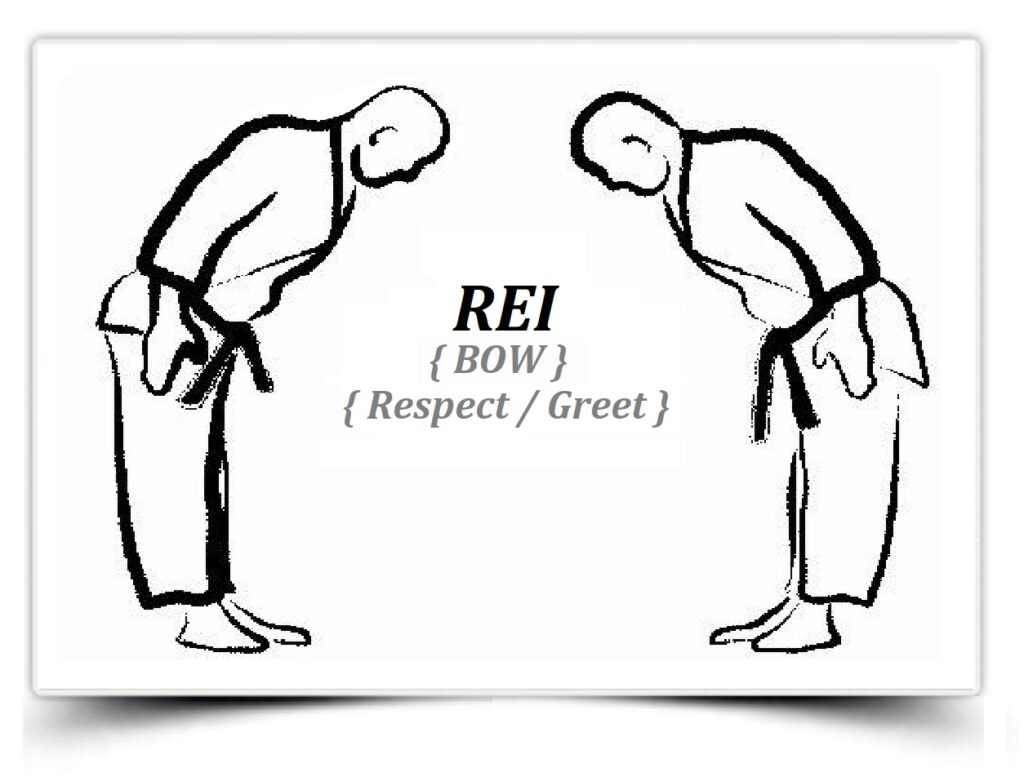
Respect for one another and working in harmony contribute to the growth of every practitioner as the rivalry demolishes and affects an individual’s growth. One should concentrate on cultivating oneself to become a well-rounded, respectful individual. The person who can acquire this goal and deal with good manners in all situations with self-discipline, respect, responsibility, and honor is said to be a true example of a Karate practitioner.
THE MEANING OF COURAGE
Not being afraid is not being courageous. Acknowledging the fear and taking steps towards overcoming it is true courage. Nobody is born weak or born tough, it is the life and the experiences that make him/her tough. To conquer difficulties in life as in Kamae (on guard) rather than avoiding the situation is the sign of a brave heart. Understanding the basics leads to the understanding of the more complex and that leads is a sign of strength and capability. As I said nobody is born tough, but one can be tough through, vigorous, sincere, dedicated, and disciplined hard, and long training in his/her life. The difficult training and challenges of karate resemble the difficulties and obstacles in life and hence the student develops an attitude of preparing oneself to be confident for greater challenges in life.
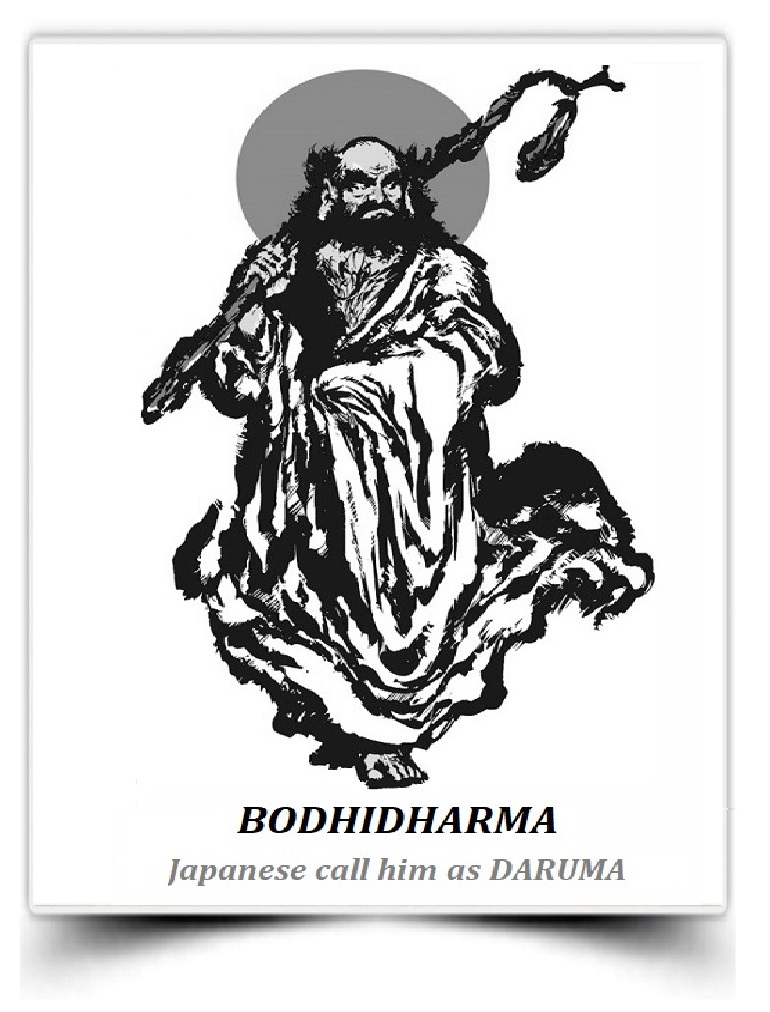
HISTORY OF KARATE-DO
An Indian prince named Bodhitara was born in the South of India (Kanchipuram) in a royal family. Being from a royal family training in martial arts was mandatory. Bodhitara was trained in Indian martial arts (armed and unarmed combat system) and Yoga (an ancient Indian art for training the mind and body). When he grew up, he embraced Buddhism and became a monk and imbibed the teachings and principles, he changed his name from Bodhitara to Bodhidharma. The Japanese know him as Daruma Taishi.
To spread the noble teachings of Buddhism, Bodhidharma traveled from India to China through the Himalayas in AD 520. He visited the emperor of the Chinese dynasty who was spreading Buddhism by the way of building monuments, reciting sutras, etc. The King asked him “he is doing so much for Buddhism what will the Buddha give him in return”. To this, Daruma replied “None”. The king couldn’t understand the answer properly because in Buddhism “a good deed done in return for a good favor is not a true deed”. The King was angry on hearing the answer and immediately ordered Daruma to leave the kingdom.
While on his way back he came across a Shaolin Temple where he found the monks were not physically able to defend themselves against criminals and bandits. Then Bodhidharma (founder of Zen) composed a sutra (“Ekkin-Kyo”) and a collection of precepts to strengthen his disciples and monks. He taught them a native Indian form of a “bare-handed, bare-footed” martial art which he had brought with him from India. Later the Shaolin temple developed it, and it came to be known as Shaolin art of fighting “Wushu” or Kung Fu. For a thousand years martial art developed and flourished in China.
In the Middle Ages during the cultural exchange between China & Okinawa, many activities were introduced in Okinawa and Chinese martial art was one of them. Okinawans blended this art of fighting with their native art known as “Tode” which was known as Karate (Chinese Hand). Later Great teacher of Karate-Do Master Gichin Funakoshi named this art as Karate-Do.
Many masters of Kara-Te (karate) appeared in the Ryukyu Islands in the next few hundred years. In the early 20th century, Master Funakoshi Gichin (1868-1957), brought the Okinawan art to the north to central Japan and renamed it as Karate “Empty Hand”.
HISTORY:- "SHITO-RYU KARATE-DO AND IT'S FOUNDER (MASTER KENWA MABUNI).
Master Kenwa Mabuni the founder of Karate-Do style “Shito-Ryu” was born on November 14, 1889, in Shuri, Okinawa-Japan. He belonged to the 17th generation from one of the bravest warriors of the Ryukyu kingdom Kenio Oshiro. In his childhood, Kenwa Mabuni was a physically weak child and so his family members encouraged him to be strong like their ancestors. Even Kenwa Mabuni dreamed of becoming physically fit and at the age of 13, he was accepted as a student at the dojo of the famous Karate-Do master Yasutsune Itosu (Nicknamed Ankoh), who lived in Shuri city of Ryukyu Island Okinawa. Kenwa Mabuni trained sincerely every day which made him learn the art of Shuri-Te (Martial arts from Shuri City) within 7 years.
At the age of 20 years, he began to study the art of Naha-Te (Martial arts from Naha City) under the guidance of Master Higaonna (Higashionna) Kanryo. Later he combined the teachings and knowledge that he received from both of his master’s and formed the Shito-Ryu Karate-Do style. The word ‘Shito’ is the combination of ‘Shi’ 糸 and ‘to‘ 東, the two first characters of the names of Master Itosu?糸洲and Master Higaonna 東恩納.
After graduating Master, Kenwa Mabuni worked in the Army and later in the Police for nearly ten years. His job made him travel to different parts of the country and get an opportunity to study other forms of karate with local masters.
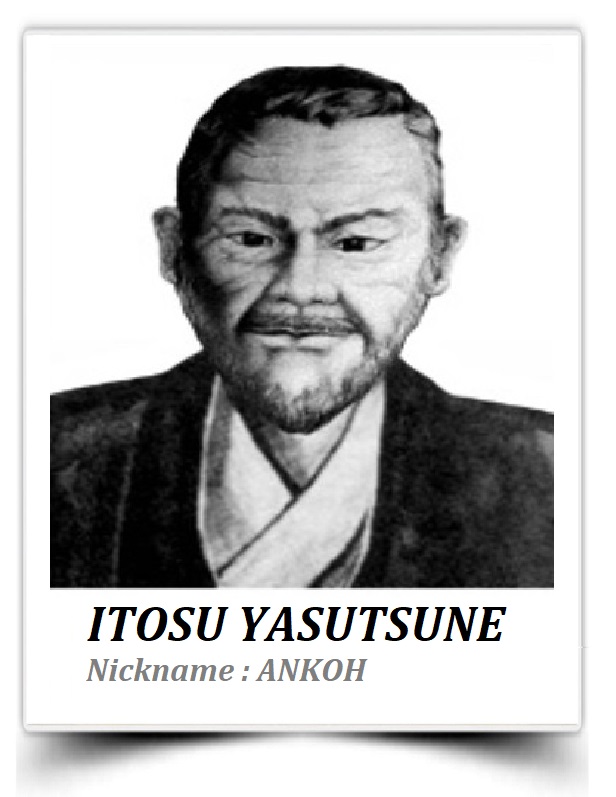
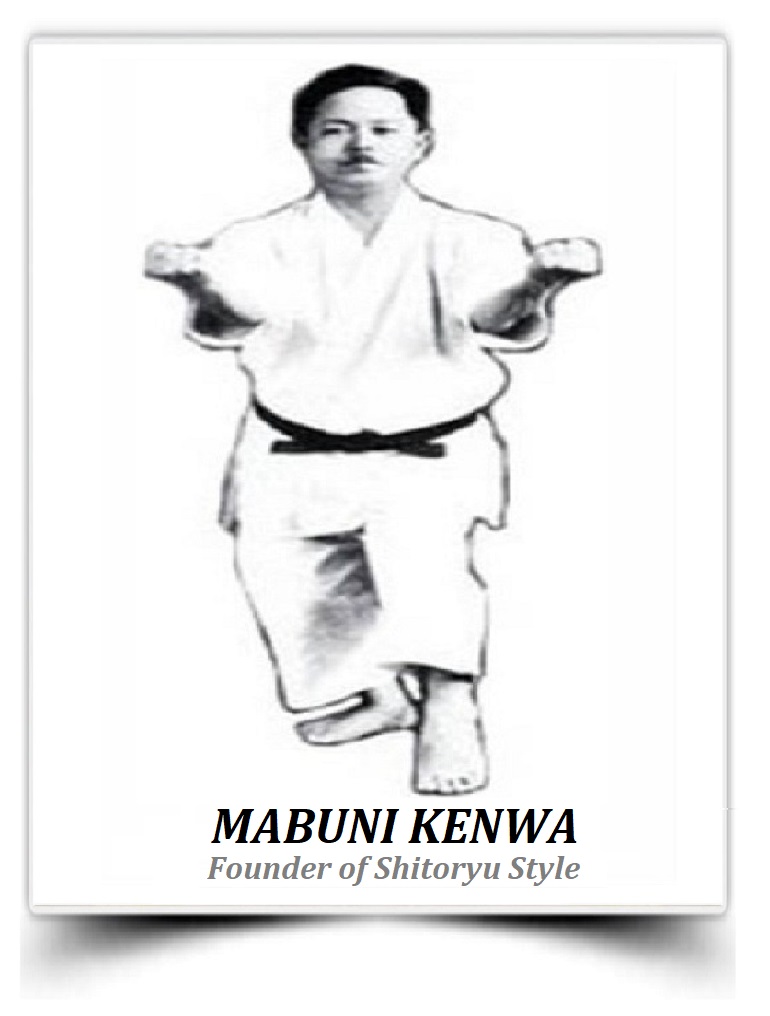
The proper Kata training also helps to explore the hidden techniques in Kata. This knowledge can be passed to the next generation through the means of Kata. Hence Kata is regarded as the soul of Karate-Do training and according to Kenwa Mabuni the student, ignoring Kata and practicing only Kumite will never progress in Karate-Do and will never understand its meaning. Shito-Ryu has the maximum Katas of all other karate-do styles.
After World War II, Master Kenwa Mabuni contributed to reconstructing Japan by devoting his life to the development of Shito-Ryu Karate-Do. Unfortunately, Kenwa Mabuni had no time to bring his dreams to reality since he died on May 23, 1952. Master Kenwa Mabuni left this noble art in the heart of every Shito-Ryu Karate-Do practitioner.
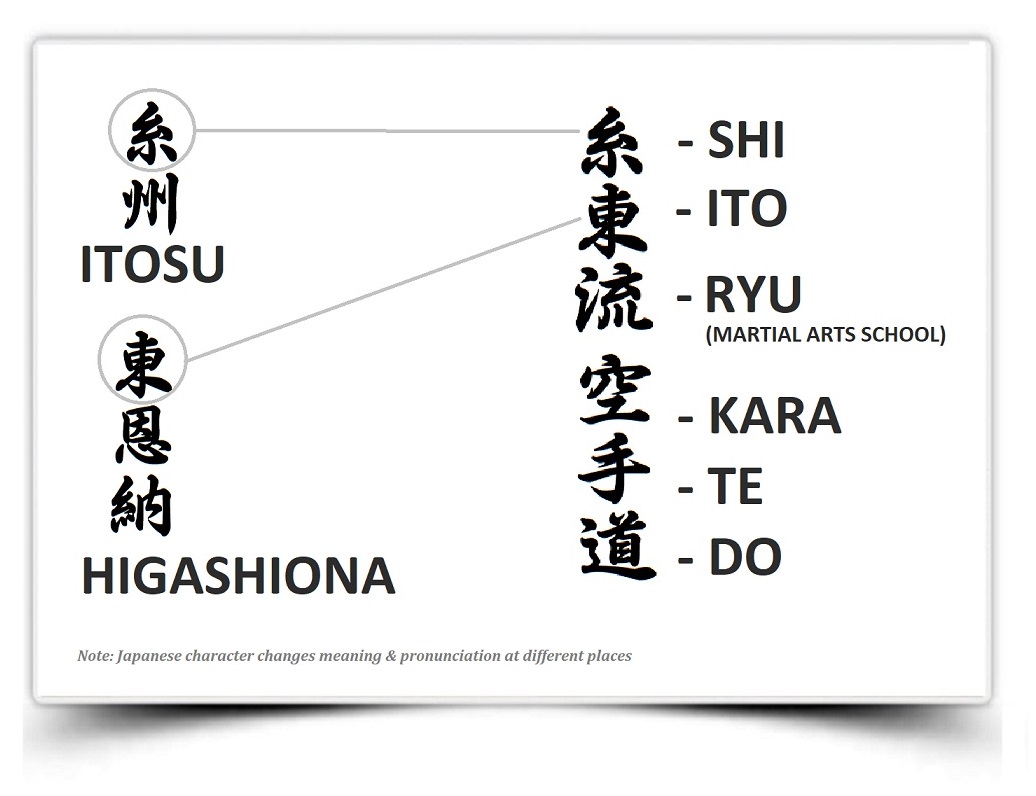
Kenwa Mabuni concentrated more on Katas because he believed that Katas combine both attack and defense techniques and are the most important part of Karate-Do, hence it is necessary to understand the meaning of each and every movement in the Kata and to perform the Kata correctly. The concept of the Bunkai and Hokei Kumite was first introduced by Kenwa Mabuni who explained the meaning behind the waza and showed the correct use for each Kata.
At our organization, we also teach and practice RYUKYU KOBU-JUTSU (also known as Ryukyu Kobudo) is an ancient martial art rooted in the Ryukyu Kingdom times. Ancient local weapons and Katas are the solid foundation of the art. Multiple katas have been created by old masters and many are named after them. To name a few masters which are as follows, Chatan Yara (1740-1812), Soeishi Ryotoku (1772-1825), Sakugawa Shungo (1786-1867), Chinen Shikiyanaka, Hama Higa (1847-unknown), Chinen Sanda (1842-1925), etc.
Middle-of 20th century-old weapons techniques were collected and systemized by renowned master Taira Shinken (1897-1970) and laid the foundation and named Ryukyu Kobudo and were absorbed by many styles like Tawada-Ryu, Soeishi-Ryu, Yamanni-Ryu, etc.
There are multiple weapons used in Ryukyu Kobu-Jutsu/ Kobudo but to name a few most famous weapons are Sai, Tongfa, Bo, Eiki (Kai Bo), Kama, Nunchaku, etc.
